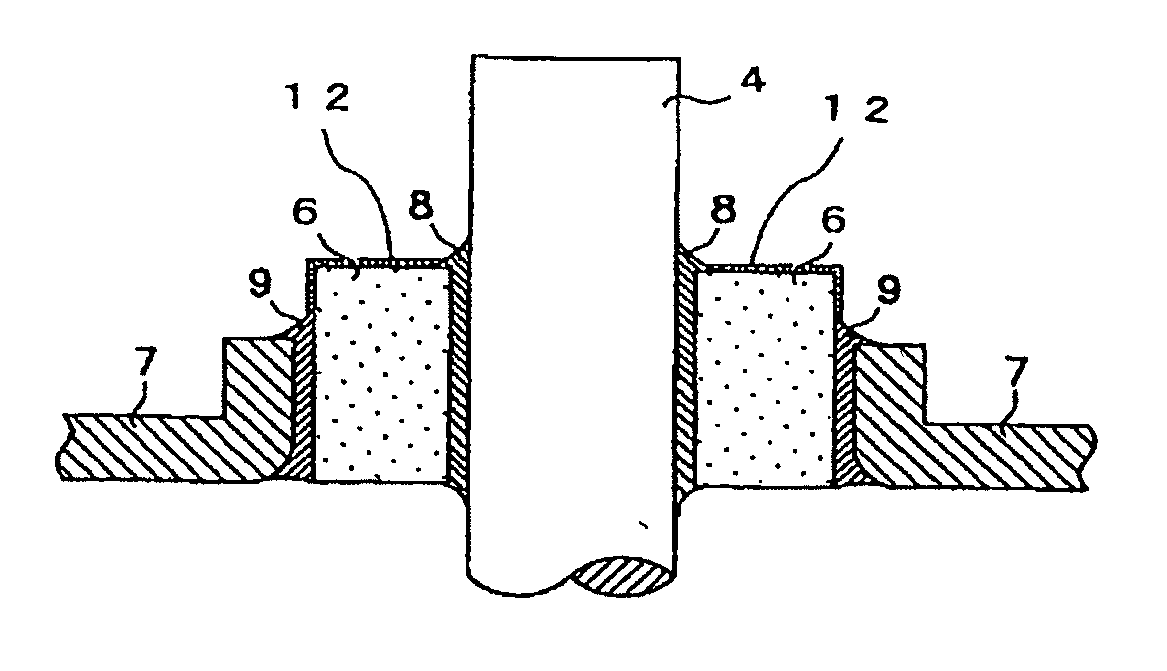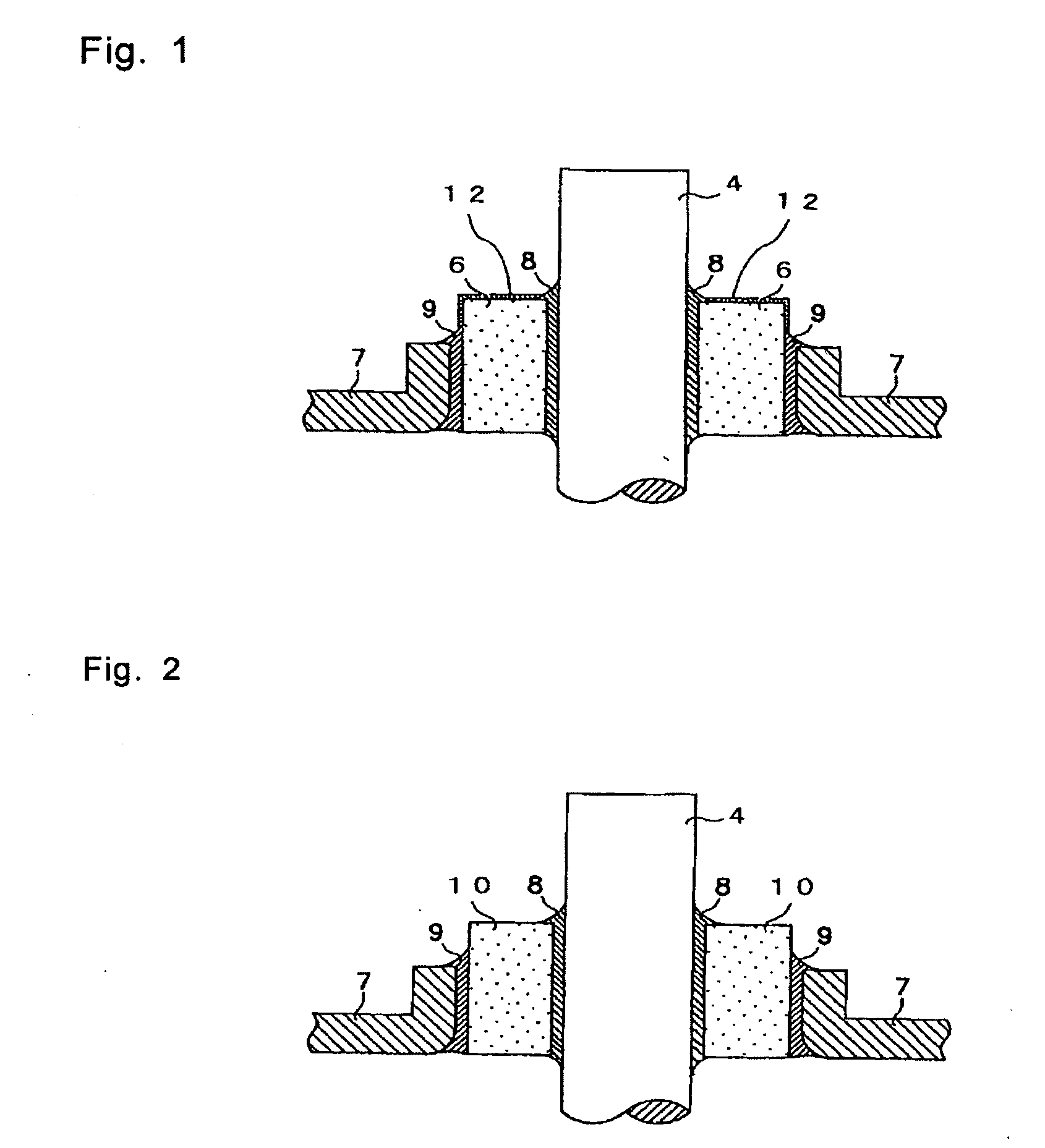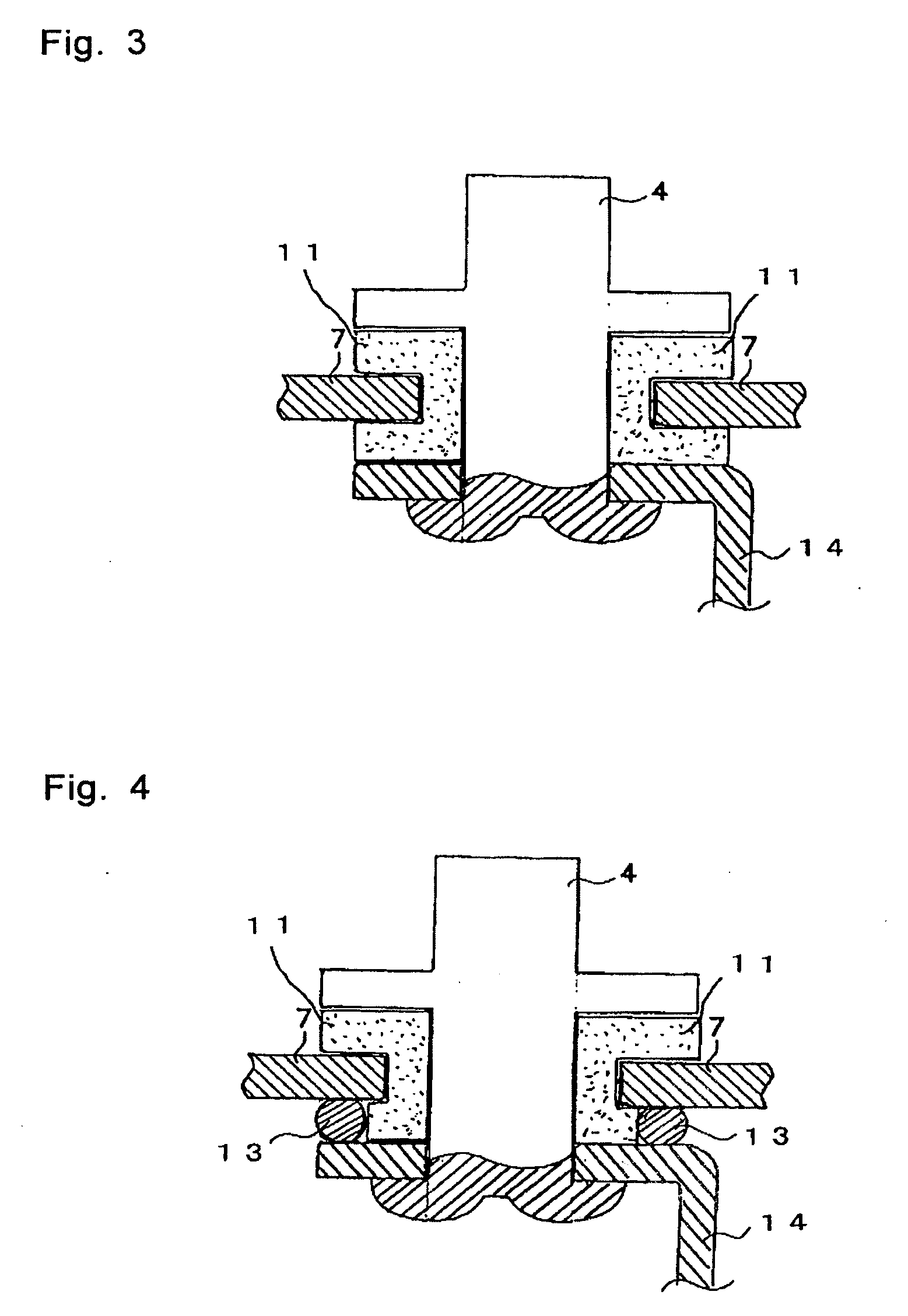Non-aqueous electrolyte battery wherein a battery case and a terminal are connected through resistance
a technology of non-aqueous electrolyte and battery case, which is applied in the direction of cell components, final product manufacturing, sustainable manufacturing/processing, etc., can solve the problems of generating violent sparks, short circuits that are mistakenly shorted, and workers may be injured, so as to suppress aluminum alloying and suppress iron dissolution
- Summary
- Abstract
- Description
- Claims
- Application Information
AI Technical Summary
Benefits of technology
Problems solved by technology
Method used
Image
Examples
examples
[0038]Referring to the drawings, an explanation will be given of the mode for carrying out this invention.
example 2
[0044]The non-aqueous electrolyte secondary battery according to Example 2 was manufactured in the same manner as in Example 1 except that the quantity of carbon of the carbon-doped polyamide resin applied to the battery outer surface of the insulating cylinder of the positive terminal is adjusted to provide a resistance of 10 kΩ between the positive terminal and battery case in the battery before the electrolyte solution is injected.
example 3
[0045]The non-aqueous electrolyte secondary battery according to Example 3 was manufactured in the same manner as in Example 1 except that the quantity of carbon of the carbon-doped polyamide resin applied to the battery outer surface of the insulating cylinder of the positive terminal is adjusted to provide a resistance of 100Ω between the positive terminal and battery case in the battery before the electrolyte solution is injected.
PUM
| Property | Measurement | Unit |
|---|---|---|
| resistance | aaaaa | aaaaa |
| resistance | aaaaa | aaaaa |
| shapes | aaaaa | aaaaa |
Abstract
Description
Claims
Application Information
 Login to View More
Login to View More - R&D
- Intellectual Property
- Life Sciences
- Materials
- Tech Scout
- Unparalleled Data Quality
- Higher Quality Content
- 60% Fewer Hallucinations
Browse by: Latest US Patents, China's latest patents, Technical Efficacy Thesaurus, Application Domain, Technology Topic, Popular Technical Reports.
© 2025 PatSnap. All rights reserved.Legal|Privacy policy|Modern Slavery Act Transparency Statement|Sitemap|About US| Contact US: help@patsnap.com



